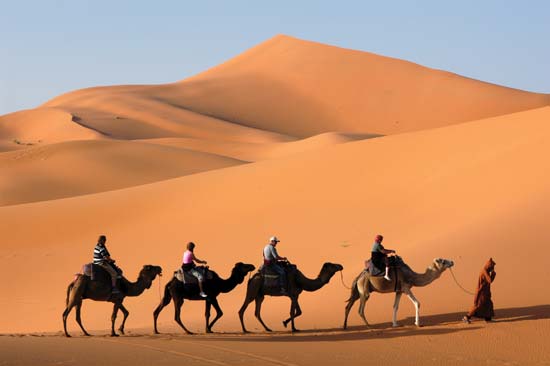
BY HASAN MURAT SÜMER (EE/IV)
hasan.sumer@ug.bilkent.edu.tr
I love the band Camel because it’s like a joker card you can play when you simply can’t think of a topic to write 600 words about. I also love the band Caravan, because they have a lot in common with Camel, making them a logical pair to create a column on. Caravan, a key band in the Canterbury scene, was one of the pioneers of progressive rock. Their blend of jazz fusion, psychedelia and an unusual songwriting style created some of the best works of the genre, and had a major influence on musicians coming after them. Unfortunately, they didn’t last long: all of their albums that are worth anything were already out there by the time Camel made its debut. Camel showed up on the prog scene very late, at a time when the genre was at its height in terms of popularity, and about to go into decline. However, they still managed to become one of the most influential bands in rock music. Here are some comparisons between the two:
Caravan made its debut with a self-titled album in 1968, but all of the members were already active musicians as they had come from an earlier band, The Wilde Flowers. This debut album is underrated even among fans of the band, because the “Caravan sound” that’s prominent in their subsequent releases is generally thought to be lacking from this one. I disagree with that idea; I think it’s an illusion caused by the album’s content. I once described the debut album of Soft Machine (the other half of The Wilde Flowers) as being made up of “psychedelia-drenched poppy tunes.” Despite being weird, Caravan wasn’t as insane as its brother, but you couldn’t expect its debut to be too far from that description since the two bands shared the same blood. Except for a lengthy final track, Caravan wrote short pop songs for this album in a whimsical style and corrupted them with some psychedelia, some jazzy jamming, and David Sinclair, who makes every other sound insignificant when he plays the organ. The ingredients are exactly the same for their following albums, which everyone agrees represent the true “Caravan sound.” For these, however, the band members didn’t write only short pop songs; they also wrote lengthy, epic suites, and they wrote a lot of them. In any case, it’s true that there’s a huge leap in musical quality between their first and their next release.
 Camel also had roots in the 60s, but the band was officially born in 1971, and released its self-titled debut in 1973. It was one of those albums where all the songs are nice, but only a few stand out. Two tracks, “Mystic Queen” and “Never Let Go,” gave an indication of what Camel was going to become in the following years. “Mystic Queen” painted romantic images with its colorful lyrics and calm, hypnotizing music, while “Never Let Go” told us about human philosophy, and also showed how talented the band was with their instruments outside the “jazzy” domain. Apart from these two tracks, the album gives the feeling that these dudes were trying to be impressive by relying on their jazzy jamming skills, rather than their songwriting skills. Here’s the interesting part: I discovered Caravan about two years after Camel; and when I returned to this album after hearing theirs, I was like, “Dude… this is so much Caravan.” Even at the current moment, I still don’t know why they sound so similar. The psychedelia in Camel’s debut is restricted to the melodies of “Mystic Queen.” Both bands liked to jam in a jazzy manner, but their styles differed significantly, as Caravan tried to be amusing while Camel attempted to be serious. They sound quite different from each other due to the differences in which instruments dominate. Camel’s second album, “Mirage,” contained the instrumental “Earthrise,” which also sounds very much like Caravan, yet with no apparent similarities. A professor of music theory or perhaps a well-versed enthusiast could probably explain in technical terms how this happens, but I couldn’t care less. The rest of “Mirage” and their next two releases (“The Snow Goose” and “Moonmadness”) defined the original “Camel sound,” with no such similarities to Caravan. In the two albums following “Moonmadness,” there was a more obvious Caravan sound, but that can be explained by the fact that David and Richard Sinclair, former members of Caravan, were functional members of Camel at the time.
Camel also had roots in the 60s, but the band was officially born in 1971, and released its self-titled debut in 1973. It was one of those albums where all the songs are nice, but only a few stand out. Two tracks, “Mystic Queen” and “Never Let Go,” gave an indication of what Camel was going to become in the following years. “Mystic Queen” painted romantic images with its colorful lyrics and calm, hypnotizing music, while “Never Let Go” told us about human philosophy, and also showed how talented the band was with their instruments outside the “jazzy” domain. Apart from these two tracks, the album gives the feeling that these dudes were trying to be impressive by relying on their jazzy jamming skills, rather than their songwriting skills. Here’s the interesting part: I discovered Caravan about two years after Camel; and when I returned to this album after hearing theirs, I was like, “Dude… this is so much Caravan.” Even at the current moment, I still don’t know why they sound so similar. The psychedelia in Camel’s debut is restricted to the melodies of “Mystic Queen.” Both bands liked to jam in a jazzy manner, but their styles differed significantly, as Caravan tried to be amusing while Camel attempted to be serious. They sound quite different from each other due to the differences in which instruments dominate. Camel’s second album, “Mirage,” contained the instrumental “Earthrise,” which also sounds very much like Caravan, yet with no apparent similarities. A professor of music theory or perhaps a well-versed enthusiast could probably explain in technical terms how this happens, but I couldn’t care less. The rest of “Mirage” and their next two releases (“The Snow Goose” and “Moonmadness”) defined the original “Camel sound,” with no such similarities to Caravan. In the two albums following “Moonmadness,” there was a more obvious Caravan sound, but that can be explained by the fact that David and Richard Sinclair, former members of Caravan, were functional members of Camel at the time.
Well, this column has to end with a decisive comparison of some sort. The “Caravan sound” is clearly defined by the band’s two masterpiece albums that followed their debut release: “If I Could Do It All Over Again, I’d Do It All Over You” and “In the Land of Grey and Pink.” Camel is a very special band for me, but if I had to make a decision as to which of the two is the better band in terms of which one created the better music, I would say Caravan, hands down, for what they did in those two albums. But from another perspective, Camel has been a loyal follower of a certain path for more than four decades, whereas the best among the best of the genre, including Caravan, failed in that task. For that reason, Camel is the bigger band… scratch that, Camel is the biggest band.
Here’s the summary of all that matters: There once were two bands that sounded similar, yet so different.
